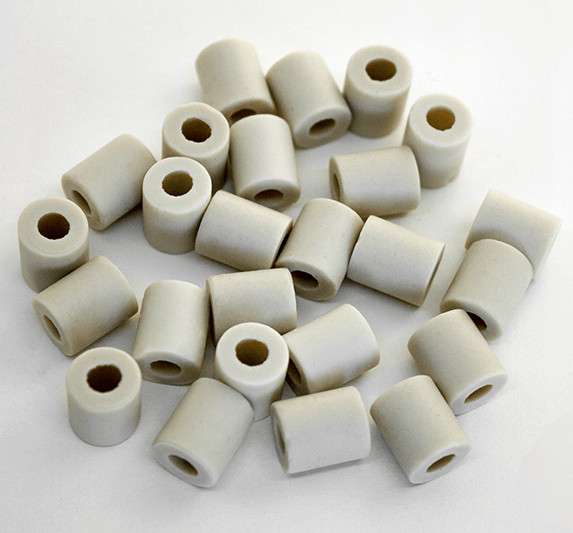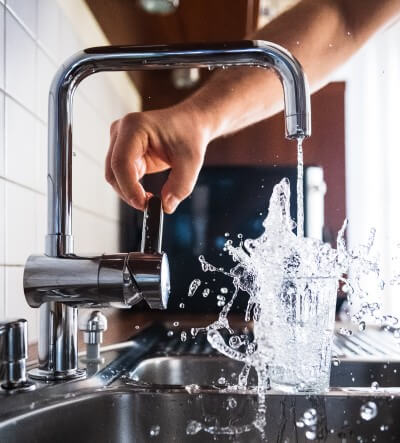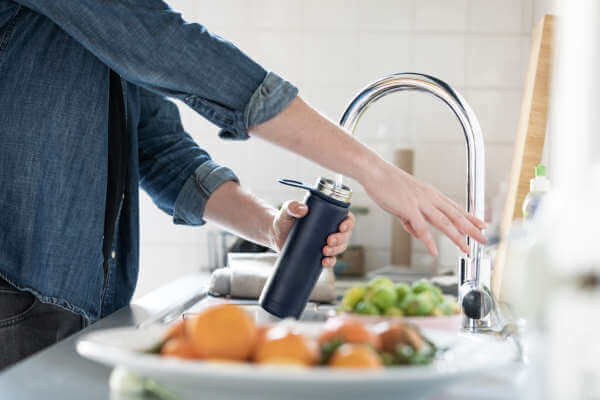You want to drink your tap water, but the smell or taste is too strong for you? Don't panic, thanks to the ceramic pearls, your water is purified and will regain a neutral taste and smell in a few minutes.
You've probably already read articles that extol the benefits of ceramic pearls to purify water. In this article, we help you distinguish between reality, marketing and lies. So get rid of everything you've read so far and stay tuned!
Let's be straightforward: ceramic pearls have a positive effect on the taste and smell of water. They are therefore a simple and effective way to make tap water easier to drink and limit the consumption of bottled water.
Indeed these pearls are effective, but it is through simple chemical phenomena and not at all thanks to the action of microorganisms claimed to be effective or the emission of positive vibrations. Pearls work according to a very special principle. Let's take a closer look.
Ceramic pearls
Ceramic pearls for water purification? What are they?
These "pearls" are in fact small tubes of very porous ceramic, made from a clay fired at over 1200°C. The clays used are most often composed of aluminium oxide.
When these tubes are placed in the water, they purify the water from heavy metals, fluorides, limescale, chlorine and even some bacteria. In doing so, they have a positive effect on the taste and smell of the water. These ceramics are inert and therefore harmless to health.
The use of ceramic pearls is a Japanese discovery. Or rather, it was a Japanese company (EMRO, or EM Research Organization) that promoted this use, with great marketing efforts (introducing among others the name and the protected trademark "EM")…
For the so-called "EM" tubes, the manufacturer explains that this clay is mixed before firing with a mixture of more than 80 different micro-organisms, chosen for their antioxidant and fermenting properties.

How do I use my ceramic pearls? And for what purposes?
Simply place your pearls in the water you wish to purify and let it rest. For best results, you will need to clean them fairly regularly. Soak them in vinegar with water, then brush them and rinse them briefly with clear water.
The uses of ceramic pearls are numerous and quite simple :
- Filter your drinking water and aquarium water naturally.
- Descale small household appliances: kettle, coffee maker, etc., …
- Keep flower bouquets longer.
- Reduce the cleaning products used in the washing machine and dishwasher. (Preferably in a washing net so as not to lose them and damage your machine).
Ceramic pearls will therefore save you a lot of money (unlike bottled water) and give your tap water a more pleasant taste and a better sanitary quality.

How do ceramic pearls work?
You can read the following explanations on an incredible amount of organic, zero waste product websites and other well-meaning influencers: "EM ceramic pearls, thanks to so-called Effective Microorganisms (or "EM") purify water, break up water clusters and spread positive waves or vibrations that heal the organism". This is a summary but you have probably caught the drift…
If you want to know the real story, this chapter is for you. If, on the other hand, it is important for you to believe the above explanation, then don't read these lines, you will be disappointed.…
Other water purification techniques exist : How to filter water naturally? Discover the best water purification techniques.
Beware of marketing claims, you are led to believe anything and everything !
Positive active microorganisms (the famous "effective microorganisms" or "EM"), which are present in nature to the extent of 5%, would regenerate living organisms. On the other hand, negative active micro-organisms (also present to the extent of 5%) are responsible for all negative processes in nature, such as putrefaction or mould. In between, 90% of the micro-organisms would be neutral or undecided, and would reinforce the effect of the predominant micro-organisms.
One can also read on most webshop sites that the ceramic pearls would contain mostly efficient micro-organisms (of course), and that these would transmit their effects to the neutral micro-organisms in the water (which ones??) and would progressively neutralise all the pathogenic elements in the water (pathogenic, but which ones??). This neutralisation would explain why the pearls do not store the polluting elements…
Finally, we can also read that these pearls "energise the water", "break up water clusters" or "emit infra-red radiation which is very beneficial for the body".
One cannot take up here all the more fanciful explanations one after the other. One can only ironically salute the impressive marketing work carried out over the years by the company that invented the concept of effective micro-organisms.
And that's a shame because these ceramic tubes have real qualities!
You just need to know what you're buying and why. This is the philosophy of KissPlanet: we want to inform you in a clear, complete and simple way, not to tell you nonsense…
There is, for example, no scientific proof of the existence of these water clusters. It has been proven that these ceramic beads no longer contain these micro-organisms (this is obvious: when ceramic is fired at over 1000°C, any yeasts and bacteria are consumed, and it is ridiculous to believe that the DNA of these organisms would still be present in the pearls and that it would transmit positive effects to the ceramic...).

We reveal the scientific explanation because we are not charlatans!
The water we drink is never pure, even spring water bought in bottles. Why else would it have a particular taste? To convince yourself of this, read the composition (mineral content) on the label. Tap water, coming from pumping stations or purification plants, contains various chemical products (chlorine, fluorinated derivatives, traces of phosphates, heavy metals). These concentrations are low enough to make the water safe to drink. However, our senses of taste and smell are sensitive to them and we detect them.
In water, these products and the surface of the ceramic pearls are electrically charged and behave like magnets: they are attracted to each other. In other words, the ceramic "attracts and captures" these molecules that we want to remove. This is a simplified view, of course, but overall this is how it works. Scientists call this phenomenon "adsorption" (with a "d", not a "b"). It is therefore not a mechanical filtration but a phenomenon of capture by electrostatic attraction.
The larger the surface area of the purifying product, the more it can capture the ions you wish to remove. It's like the number of seats in a bus: the more seats, the more passengers you can put on. However, the ceramic that makes up the tubes is a porous material, i.e. it contains an astronomical number of small bubbles or crevices. In practice this means that its surface area in contact with water is enormous, much larger than its size or weight would suggest. This is why a few tubes can "purify" a large quantity of water.
You will have understood that the amount of water that a tube can sanitise depends on the concentration of these undesirable constituents in the water. The purification capacity of these tubes therefore also depends on the quality of the water in which you put them.
But then, when the surface is completely saturated with captured ions, what to do with the ceramic tubes?
That's an excellent question. There are several ways to restore the effectiveness of these tubes :
- Let them dry and brush them: some of the captured ions evaporate or go away with a simple rubbing.
- Wash them with vinegar: other particles will be removed when washing with a simple product such as vinegar.
- By heating them again: in boiling water (to be disposed of afterwards...) or a few dozen minutes in the oven at 200°C (let them cool down slowly, without burning you!).
How often? For use in running water, after a few weeks, 6 months at the latest. Coloured stains on the surface are good indicators that it is time to give them a new lease of life. It is important to note that some captured ions simply cannot be removed with the domestic processes described above. The tubes therefore logically have a limited life span. It will depend on your use. But you will still be able to enjoy them for many months or even years.
